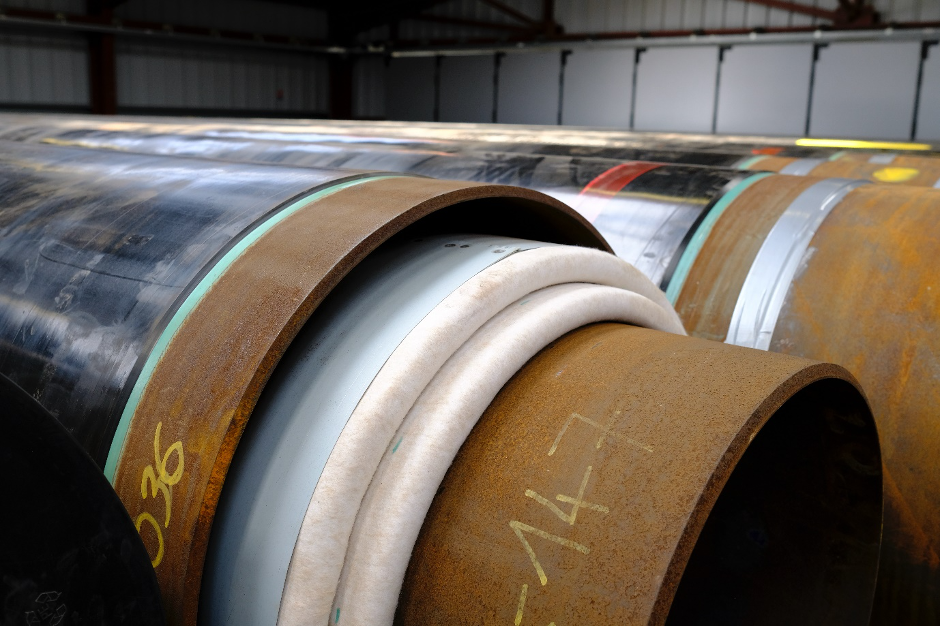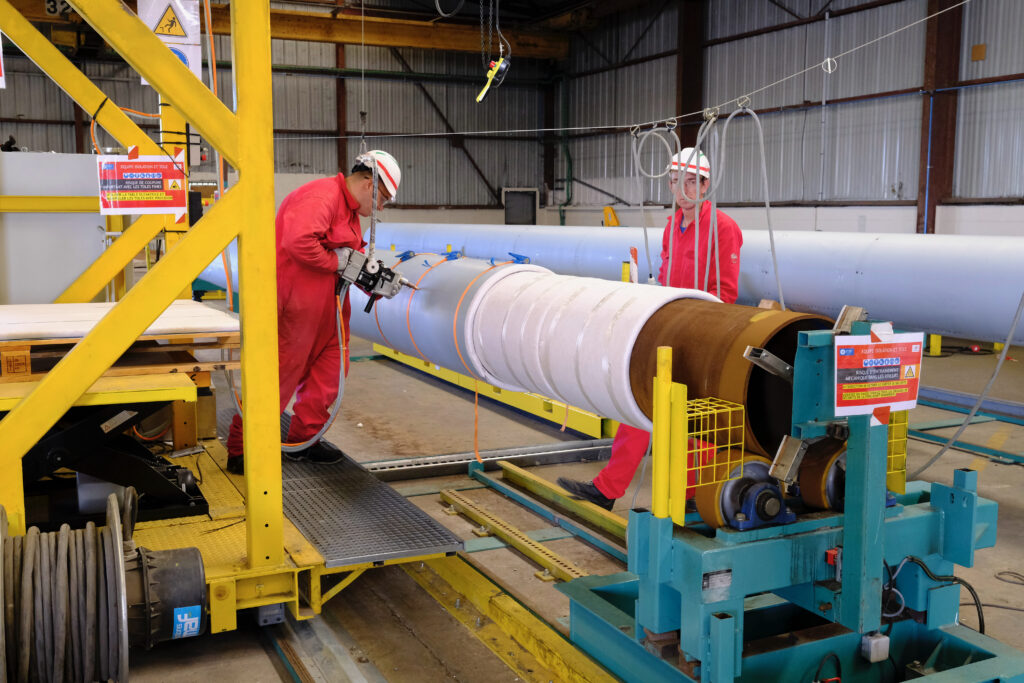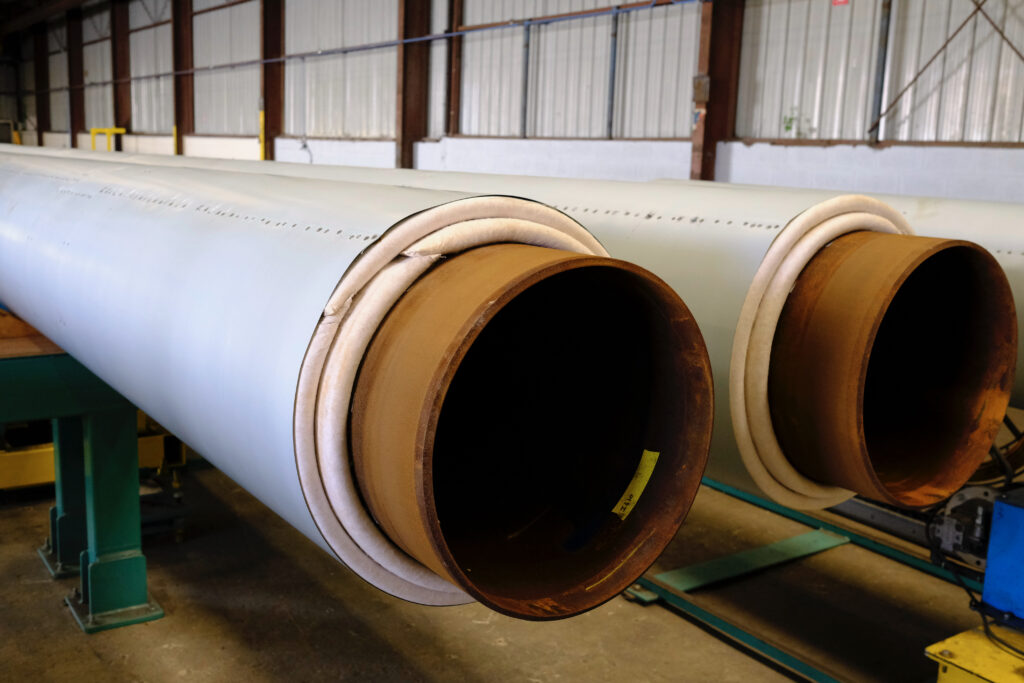Refrigerated Pipelines
Our Refrigerated pipe-in-pipe (PIP) technology enables the transfer of all liquid gas products requiring temperatures as low as -60°C. This system allows for subsea and buried pipelines, enabling terminal architectures.

Key advantages
Our Refrigerated PiP provides safe and efficient transfer of liquid gas products including LPG, Ammonia, and CO₂. The double walled configuration of PiP provides for double containment and additional protection from the environment.
Enables jettyless solutions
Suitable for subsea and buried applications
Reduces environmental and community impacts
Provides improved seismic response
Integrates pipeline integrity monitoring
Reduces CAPEX

Enables jettyless solutions
Suitable for subsea and buried applications
Reduces environmental and community impacts
Provides improved seismic response
Integrates pipeline integrity monitoring
Reduces CAPEX
Market Needs
LPG, Ammonia and CO2 are often liquified for handling at import and export terminals. Liquified gas needs to be maintained at subzero temperatures throughout the supply chain. Our excellent thermal performance enhances the efficiency of pipeline transport of refrigerated gases.
Our Refrigerated pipeline solutions is designed to address the evolving needs of the market for the safe, efficient, and sustainable transfer of liquid gas products such as LPG, Ammonia, and CO2.
- LPG: Liquefied Petroleum Gas (LPG); Propane (-45°C) and Butane (-18°C), is a versatile fuel with widespread applications in residential, industrial, and transportation sectors. Its portability and clean-burning properties make it a key player in energy supply. In addition, LPG serves for petrochemical feedstock.
- Ammonia:(-33°C) : Ammonia has made its way into the clean energy market, particularly as a vector for hydrogen. Its ability to store and transport hydrogen efficiently positions it as a cornerstone of the global effort to decarbonize power generation, shipping, and industrial processes. In addition, Ammonia has several industrial applications and can serve as a decarbonize fuel.
- Carbon dioxide (CO2): A greenhouse gas, is at the center of global carbon capture and storage (CCS) initiatives, a key strategy in mitigating climate change. The ability to transport captured CO2 efficiently to storage or reuse sites is critical to achieving net-zero goals.
Why PiP ?
Designed for subsea or buried installation, the PiP can be implemented in congested ports environment or with existing infrastructure. By removing the need for a jetty, our refrigerated pipeline system minimizes impact on communities and marine traffic, making it an enabler for terminal development.
- Izoflex LT® Insulation: The proprietary Izoflex LT® technology provides industry-leading thermal insulation with the lowest conductivity available. This ensures a compact design with narrower pipeline corridors, minimizing land use. Izoflex LT® is also non-aging, eliminating the need for maintenance and maximizing long-term reliability.
- Versatile Performance: Capable of maintaining temperatures as low as -60°C, our refrigerated pipelines handle a wide range of products, including LPG (Propane -45°C, Butane -18°C), CO2 and Ammonia (-33°C), ensuring suitability for diverse industrial applications.

- Izoflex LT® Insulation: The proprietary Izoflex LT® technology provides industry-leading thermal insulation with the lowest conductivity available. This ensures a compact design with narrower pipeline corridors, minimizing land use. Izoflex LT® is also non-aging, eliminating the need for maintenance and maximizing long-term reliability.
- Versatile Performance: Capable of maintaining temperatures as low as -60°C, our refrigerated pipelines handle a wide range of products, including LPG (Propane -45°C, Butane -18°C), CO2 and Ammonia (-33°C), ensuring suitability for diverse industrial applications.

- Double Containment Design: Our double-envelope system enhances safety and reliability, providing protection against external damage and potential leak containment for all transported refrigerated fluids.
- Continuous Integrity Monitoring: Continuous pressure monitoring of the closed annulus volume provides a sensitive integrity monitoring solution. This integrated system provides leak detection of both inner and outer pipe, ensuring safety and efficiency for the pipeline operator.
- Buried architecture : The PiP solution, without expansion loops allows for buried road and rail crossings and the installation within horizontal directional drills.
Your benefits
Our subsea ammonia and LPG pipe-in-pipe system eliminates the need for jetty or trestle structures, offering a cost-effective and environmentally friendly solution at terminals. This innovative solution also allows clients to avoid costly dredging, stay outside tsunami risk zones, and be installed in congested port areas, public spaces, and even near tourist locations with minimal disruption to local marine traffic.
- Enhanced Safety: Superior robustness and leak detection, reduce risks to communities, infrastructure, and the environment.
- Terminal enabler: Subsea or buried refrigerated pipeline enable terminal location in congested environment.
- Operational Efficiency: Minimal heat ingress due to excellent Izoflex performance enhances production and reduces OPEX.
- Cost-Effectiveness: Jettyless solutions and reduced boil-off deliver significant CAPEX and OPEX savings.